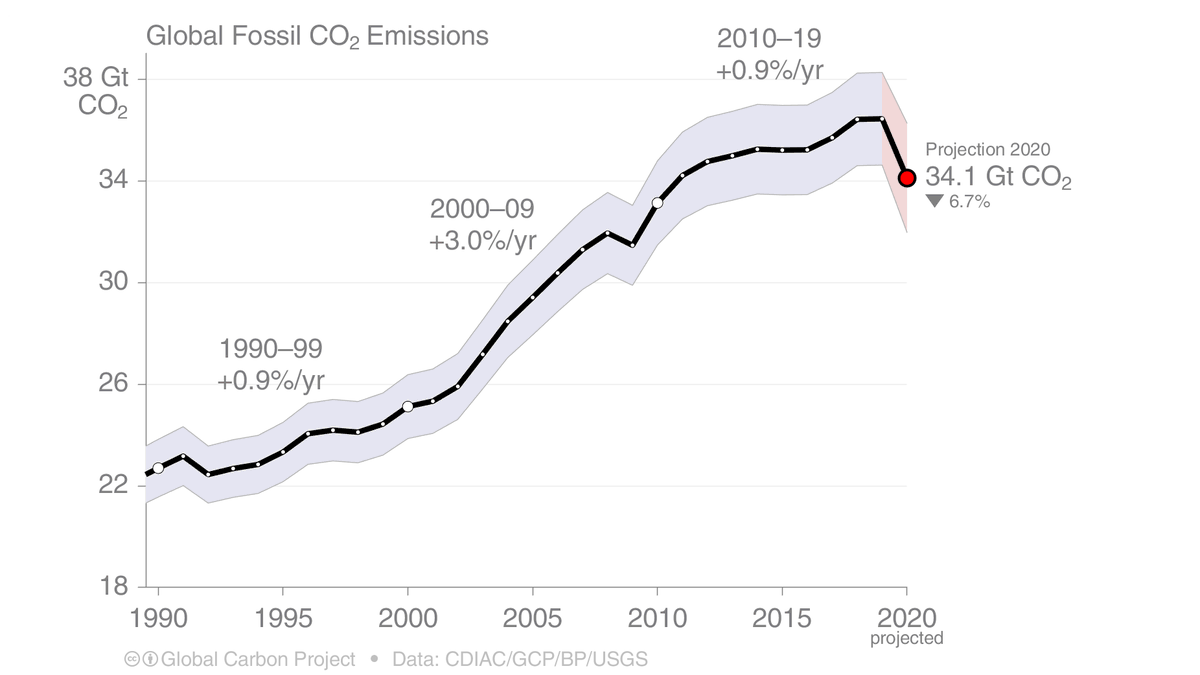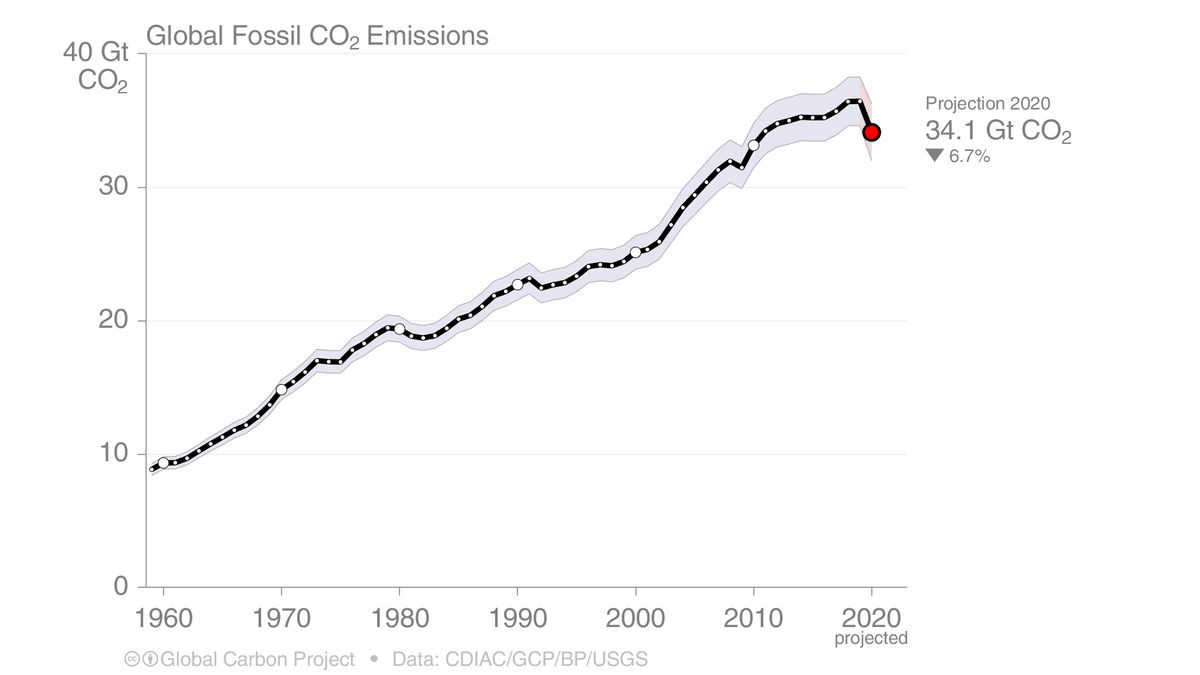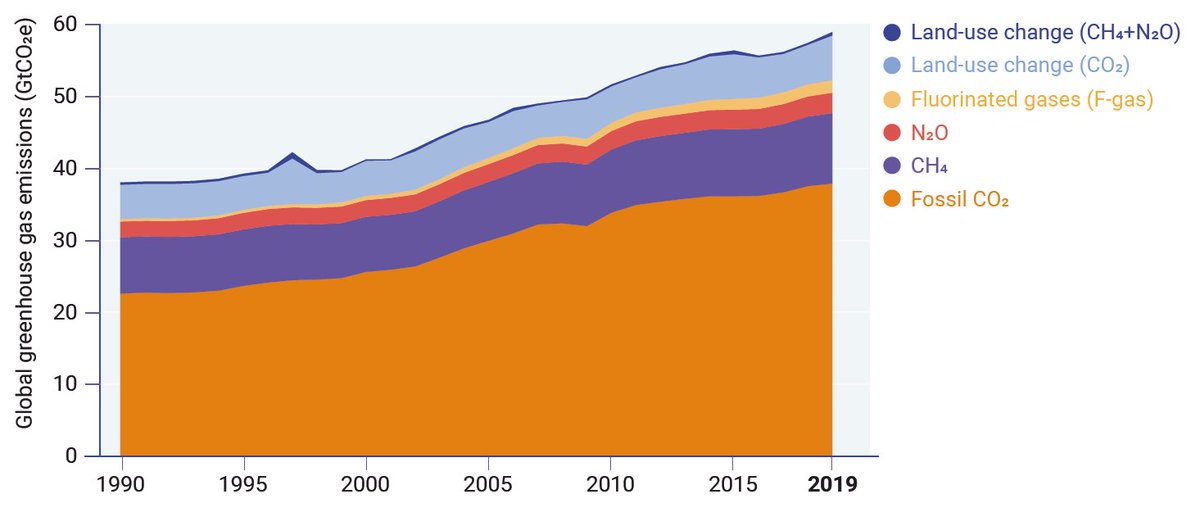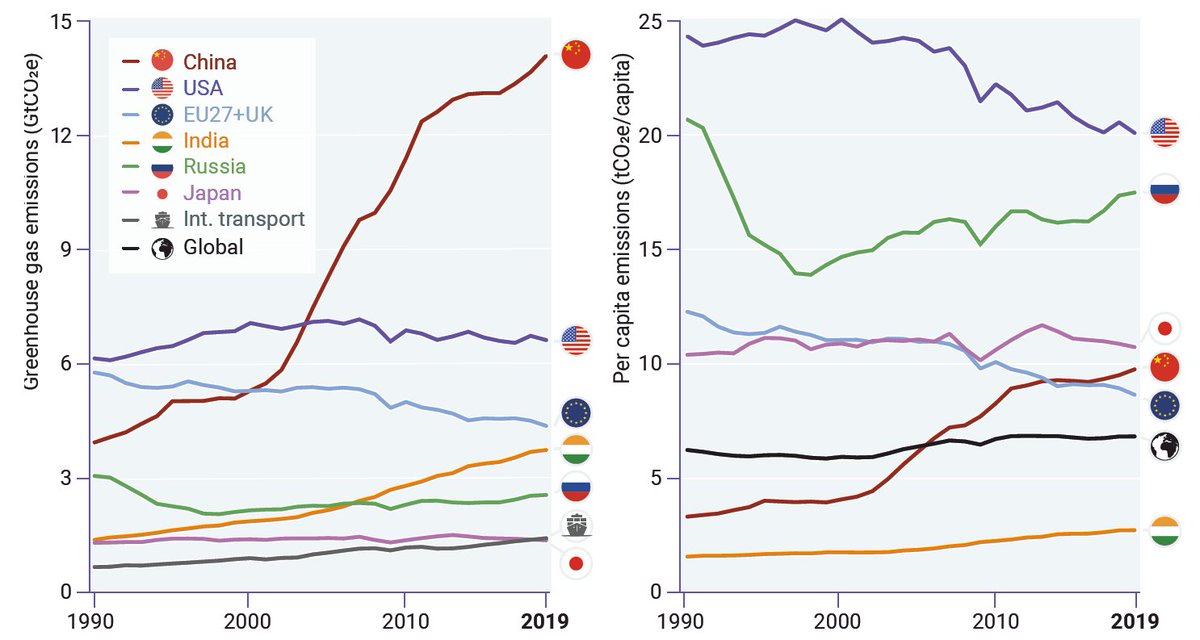
Given all the 𝗳𝗶𝗿𝗲𝘀 around the world, some might be surprised that the CO₂ emissions from land-use change in 2019 & 2020 are not too anomalous.
Why? Only the fires in the Amazon & SE Asia were from land-use change.
1/
globalcarbonproject.org/carbonbudget/i…
Why? Only the fires in the Amazon & SE Asia were from land-use change.
1/
globalcarbonproject.org/carbonbudget/i…

The big fires in Australia, Arctic, & California were 'natural' & not a consequence of land-use *change*.
Those fires result in either higher atmospheric concentrations or a weaker land sink (bottom left) & not bigger land-use change (top left).
Bottom right is net land.
2/
Those fires result in either higher atmospheric concentrations or a weaker land sink (bottom left) & not bigger land-use change (top left).
Bottom right is net land.
2/

We can measure the increase in the atmospheric concentration quite accurately, it is a matter or partitioning the CO₂.
Fires either go into land-use or land-sink, depending on cause. This is more an accounting (definition) convention.
All very complex...
3/
Fires either go into land-use or land-sink, depending on cause. This is more an accounting (definition) convention.
All very complex...
3/

Also important to remember that 𝒆𝒙𝒕𝒓𝒂 fires (over the baseline) could emit, say, an extra 1GtCO₂ (Australia was less than that).
This is on top of annual fluxes >10GtCO₂ in the budget components. So, detecting the signature of fires in the carbon cycle can be hard!
4/4
This is on top of annual fluxes >10GtCO₂ in the budget components. So, detecting the signature of fires in the carbon cycle can be hard!
4/4

• • •
Missing some Tweet in this thread? You can try to
force a refresh















